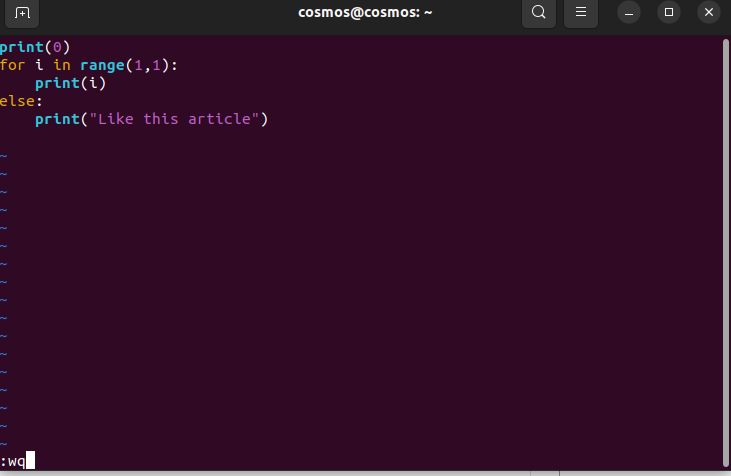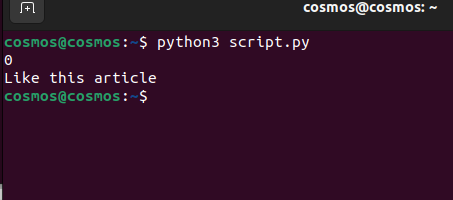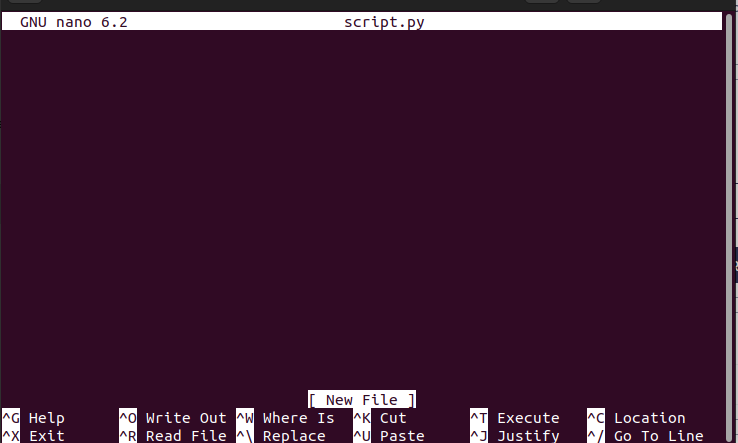
|
|
Linux users like to do tasks using the terminal as it gives the user more power to do anything with the system whether it is to store, create, or remove files. Other than file management and system control tasks, the terminal is used to write scripts for any programming language. Python and Bash scripts are mostly typed using a terminal and it is best practice to do so, as it makes the programmer more versatile. In this article, we are going to look into how can we write and save Python scripts using a terminal with terminal editors like Vim and Nano. Table of Content Using Vim Editor to Save Python Script in LinuxStep 1: Create and open the file using VimWe are going to create a file and start writing our Python script using Vim. For that, open your terminal and write the following command. vim script.py
The above command will open vim editor with the file name “script.py” and then we can start writing script in the file.  Starting vim editor Step 2: Vim and python scriptVim editor has two modes: Command mode: This mode is used for running commands to save file, undo changes and many more. In this article we are going to see the general commands that are used to save files. You can search for vim cheatsheet as vim has a lot of commands. Insert mode: In this mode, we write the stuff we want to. All writing related stuff is done in Insert mode. How to switch between these two modes?. Well it is quite simple, for that you have to check, if you are in insert mode or command mode.
 Command mode
 insert Mode The above picture explains the mode in which you are. If it says “Insert” You are in insert mode and write your stuff. Step 3: Writing script and saving the scriptbefore writing make sure to switch to insert mode by pressing “i” key on your keyboard. Now lets write a small script and save it.  Python Script After writing our script, it’s time to save the script. For that make sure to switch to “Command mode” by pressing “esc” key. commands to save file:
 Saving the file After entering the command press enter and then your script will be saved in your present working directory. To run the python script simply run the following command: python3 script.py
Output:  Output Using Nano Editor to Save Python Script in LinuxStep 1: Starting nano editorTo create file and starting writing python script, it follows the same command as vim but here we use “nano” instead of “vim”. Command: nano script.py
Output:  nano interface Step 2: Writing and Saving the scriptCommands to save the script in nano. There are various commands in nano, but we are only interested in saving the script. If you want to know the commands of nano check the cheatsheet for it. Commands:
Lets write a script and then save it using nano. print(0)
if (0):
print("GFG")
else:
print("Like this article.")
 Script Save the script: Press “Ctrl + o ” and hit “Enter” to save and then press “ctrl + x” to exit the nano editor. Step 3: Execute the scriptExecuting the script is same that is : Command: python3 script.py
Output:  Output How To Save Python Scripts In Linux Via The Terminal – FAQsHow do I create a new Python script file in Linux using the terminal?
Can I save a Python script with a different name or extension in Linux?
How do I save changes to an existing Python script in Linux via the terminal?
Is there a way to automate the saving of Python scripts in Linux via the terminal?
What are some best practices for organizing and saving Python scripts in Linux?
ConclusionIn this article we discussed how to use the terminal in Linux to write and save Python scripts using Vim and Nano editors. It explains basic commands and steps for creating, editing, and saving scripts. Additionally, it provides answers to common questions, suggesting best practices for organizing scripts and using version control. By mastering these techniques, users can efficiently manage Python projects in Linux. |
Reffered: https://www.geeksforgeeks.org
| Python Programs |
Type: | Geek |
Category: | Coding |
Sub Category: | Tutorial |
Uploaded by: | Admin |
Views: | 13 |